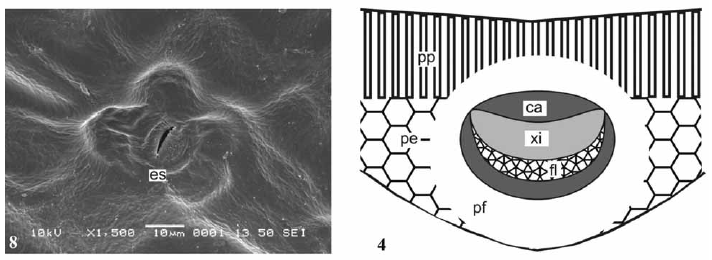Pereskia aculeata Mill. (Cactaceae) is a climbing shrub commonly known as Barbados gooseberry. It has high mucilage and protein content and it is employed in the food and pharmaceutical industry. In traditional medicine, P. aculeata is used externally as emollient. This work aimed to study the leaf and stem anatomy of this plant, in order to supply additional information for its identification and quality control. Mature leaves and stem fragments were fixed, freehand sectioned and stained either with astra blue and basic fuchsine or toluidine blue. Histochemical tests and ultrastructure analysis were carried out. The leaf is simple and elliptical, and has uniseriate epidermis, paracytic stomata on both surfaces, dorsiventral-like mesophyll, several druses of calcium oxalate and large isodiametric cells containing mucilage. In the midrib a collateral bundle in open arc is embedded. The petiole exhibits a plain-convex transection and a collateral bundle in closed arc shape. The stem, in incipient secondary growth, has uniseriate epidermis, angular collenchyma, cortical parenchyma with many amiloplasts, perivascular fibre caps and collateral vascular organization. In the cortex and pith, numerous cavities containing mucilage and druses of calcium oxalate are seen, the latter also in the phloem.
Pereskia aculeata; Cactaceae; emollient; mucilage; medicinal plant







